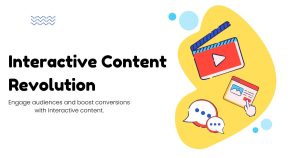Emotional Marketing: Driving Customer Loyalty

Brands that connect with customers on an emotional level see 2.4 times more revenue growth than those that don’t. This statistic reveals a fundamental truth about consumer behavior: people don’t just buy products—they buy feelings, stories, and connections.
Emotional marketing campaigns tap into the human psyche, creating bonds that transcend traditional advertising. While rational appeals focus on features and benefits, emotional marketing speaks to deeper motivations like belonging, security, joy, and aspiration. These campaigns don’t just inform customers; they make them feel something profound about a brand.
The most successful companies understand this principle and craft their messaging accordingly. Nike doesn’t sell shoes—they sell the feeling of achievement. Apple doesn’t just market computers—they promote creativity and innovation. These brands have mastered the art of emotional connection, turning customers into loyal advocates who choose their products repeatedly.
Understanding how to create these emotional connections can transform your marketing strategy from forgettable to unforgettable.
The psychology behind emotional marketing
Emotions drive purchasing decisions more than logic does. Neuroscience research shows that people with damage to the emotional centers of their brains struggle to make even simple buying choices, despite having their logical reasoning intact. This reveals how deeply intertwined emotions and decision-making really are.
When customers encounter emotional marketing campaigns, several psychological processes activate simultaneously. First, emotional content triggers the release of neurochemicals like dopamine and oxytocin, which create positive associations with the brand. These chemicals help form memories that stick longer than purely rational information.
Second, emotions create shortcuts in decision-making. Rather than analyzing every feature and specification, customers rely on how a brand makes them feel. This emotional shortcut explains why people often choose familiar brands over cheaper alternatives—the emotional connection provides perceived value beyond the product itself.
Trust plays a crucial role in this process. Emotional marketing campaigns that authentically represent brand values build credibility with audiences. When customers sense authenticity, they’re more likely to develop long-term relationships with the brand. Conversely, campaigns that feel manipulative or insincere can damage trust permanently.
Types of emotional appeals that work
Different emotions serve different marketing purposes, and successful brands understand which feelings align with their goals and audience.

Fear-based appeals
Fear can be a powerful motivator when used ethically. Security companies, insurance providers, and health organizations often leverage fear to encourage protective behaviors. The key lies in balancing concern with hope—showing both the problem and the solution.
Effective fear-based campaigns focus on realistic risks rather than manufactured anxieties. They present clear action steps that help customers feel empowered rather than helpless. When done well, these campaigns position the brand as a trusted ally rather than an alarmist.
Joy and happiness
Positive emotions create strong brand associations and encourage sharing. Coca-Cola’s happiness-focused campaigns have run for decades because joy is universally appealing and naturally contagious. Happy customers become brand ambassadors who spread positive word-of-mouth.
Joy-based campaigns work particularly well for consumer goods, entertainment, and lifestyle brands. They create uplifting experiences that customers want to repeat and share with others. The challenge lies in maintaining authenticity while avoiding superficial cheerfulness.
Nostalgia and belonging
Nostalgia taps into powerful memories and emotions tied to specific times, places, or experiences. Brands like McDonald’s and Disney regularly use nostalgic elements to connect with customers across generations. These campaigns often feature familiar music, imagery, or references that transport people back to meaningful moments.
Belonging addresses the fundamental human need for connection and community. Successful campaigns make customers feel part of something bigger than themselves. This emotional appeal works especially well for brands targeting specific demographics or interest groups.
Pride and achievement
Achievement-focused campaigns celebrate customer accomplishments and aspirations. Fitness brands, educational institutions, and luxury goods often use this approach. These campaigns position the brand as an enabler of success rather than just a product provider.
Pride-based marketing works when it feels earned rather than empty. Customers need to see authentic connections between the brand and their achievements. The most effective campaigns celebrate both small wins and major milestones.
Building authentic emotional connections
Authenticity separates memorable emotional marketing campaigns from manipulative attempts at persuasion. Customers can sense when brands genuinely care about their values versus when they’re simply trying to exploit emotions for profit.
Authentic emotional connections start with understanding your audience deeply. This goes beyond demographics to include psychographics—their values, fears, aspirations, and daily experiences. Research should reveal not just what customers buy, but why they buy and how they feel throughout the process.
Brand storytelling plays a crucial role in building these connections. Stories help customers see themselves in relation to the brand, creating personal relevance that purely factual information cannot achieve. The most powerful brand stories focus on customer transformation rather than product features.
Consistency across all touchpoints reinforces emotional connections. Every interaction—from advertising to customer service to packaging—should reflect the same emotional values. Mixed messages confuse customers and weaken the emotional bond.
Timing also matters in emotional marketing. Campaigns need to align with customer mindsets and cultural moments. A celebration-focused campaign during a economic downturn might feel tone-deaf, while empathetic messaging during difficult times can strengthen relationships.

Measuring emotional impact
Traditional marketing metrics like click-through rates and conversion percentages don’t fully capture emotional engagement. Brands need additional measurement approaches to understand how well their emotional marketing campaigns perform.
Sentiment analysis tools can track how customers feel about brand messaging across social media platforms and review sites. These tools identify not just positive or negative responses, but specific emotions like excitement, trust, or disappointment.
Brand lift studies measure changes in perception, awareness, and purchase intent before and after campaign launches. These studies often include emotional response testing, where participants rate their feelings toward different campaign elements.
Customer lifetime value provides insight into long-term emotional connections. Customers who develop strong emotional bonds typically have higher lifetime values than those motivated purely by price or convenience. Tracking this metric over time reveals the financial impact of emotional marketing investments.
Net Promoter Score (NPS) surveys measure emotional loyalty through willingness to recommend. While NPS isn’t purely an emotional metric, strong emotional connections usually correlate with higher recommendation rates.
Social sharing and engagement rates indicate emotional resonance. Content that makes people feel something is more likely to be shared, commented on, and discussed. High engagement rates often signal successful emotional connection.
Common mistakes to avoid
Many brands struggle with emotional marketing because they make predictable errors that undermine their efforts.
Focusing too heavily on one emotion can limit campaign effectiveness. While consistency is important, relying exclusively on happiness or fear restricts the brand’s ability to connect with customers in different situations. The best emotional marketing campaigns use a primary emotion supported by secondary feelings.
Ignoring cultural context can cause campaigns to fail or even backfire. Emotions are expressed and interpreted differently across cultures, age groups, and social contexts. What feels authentic to one audience might seem manipulative or inappropriate to another.
Overemphasizing production values while neglecting authentic storytelling creates hollow campaigns. Slick visuals and dramatic music cannot substitute for genuine emotional connection. Customers respond to authentic stories more than expensive production techniques.
Misaligning emotional appeals with brand values creates confusion and distrust. A luxury brand cannot successfully use empathy-based messaging about affordability because it contradicts their core positioning. Emotional appeals must feel natural and consistent with established brand identity.
Failing to follow through on emotional promises damages credibility. If a campaign emphasizes customer care but the actual customer service experience is poor, the emotional connection breaks down. Every brand touchpoint must deliver on the emotional promises made in marketing.
The future of emotional connection
Emotional marketing campaigns continue evolving as technology and cultural values shift. Personalization technology enables brands to tailor emotional appeals to individual customers based on their behavior and preferences. This creates more relevant and powerful connections than broad demographic targeting.
Video content and interactive experiences are becoming dominant formats for emotional marketing. These mediums allow brands to tell richer stories and create more immersive emotional experiences than traditional text or image-based advertising.
Social consciousness is increasingly important in emotional marketing. Customers expect brands to take stands on social issues and demonstrate genuine commitment to causes beyond profit. Emotional campaigns that authentically connect brand values with social impact tend to perform well with younger audiences.
Privacy concerns are reshaping how brands collect and use emotional data. Future emotional marketing will need to balance personalization with respect for customer privacy. Transparent data practices will become essential for maintaining trust.

Start connecting on a deeper level
Emotional marketing campaigns represent the difference between transactions and relationships. Brands that master emotional connection don’t just acquire customers—they build communities of advocates who choose them repeatedly and recommend them enthusiastically.
Success requires understanding your audience’s emotional landscape, crafting authentic messages that resonate with their values, and delivering consistent experiences across all touchpoints. The investment in emotional marketing pays dividends through increased customer loyalty, higher lifetime value, and stronger competitive positioning.
Begin by examining your current marketing through an emotional lens. What feelings do your campaigns evoke? Do those emotions align with your brand values and customer needs? Use these insights to develop more emotionally resonant campaigns that forge lasting connections with your audience.





